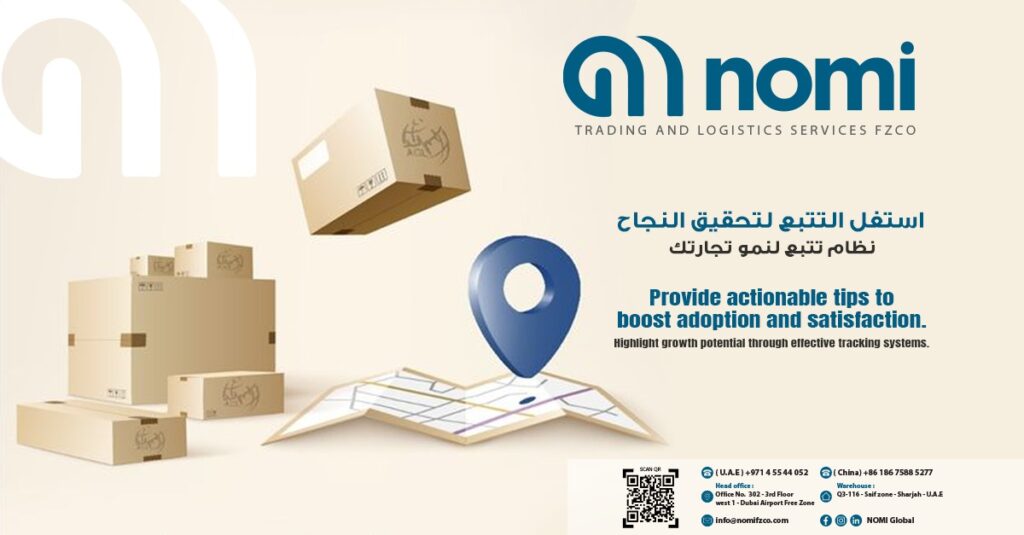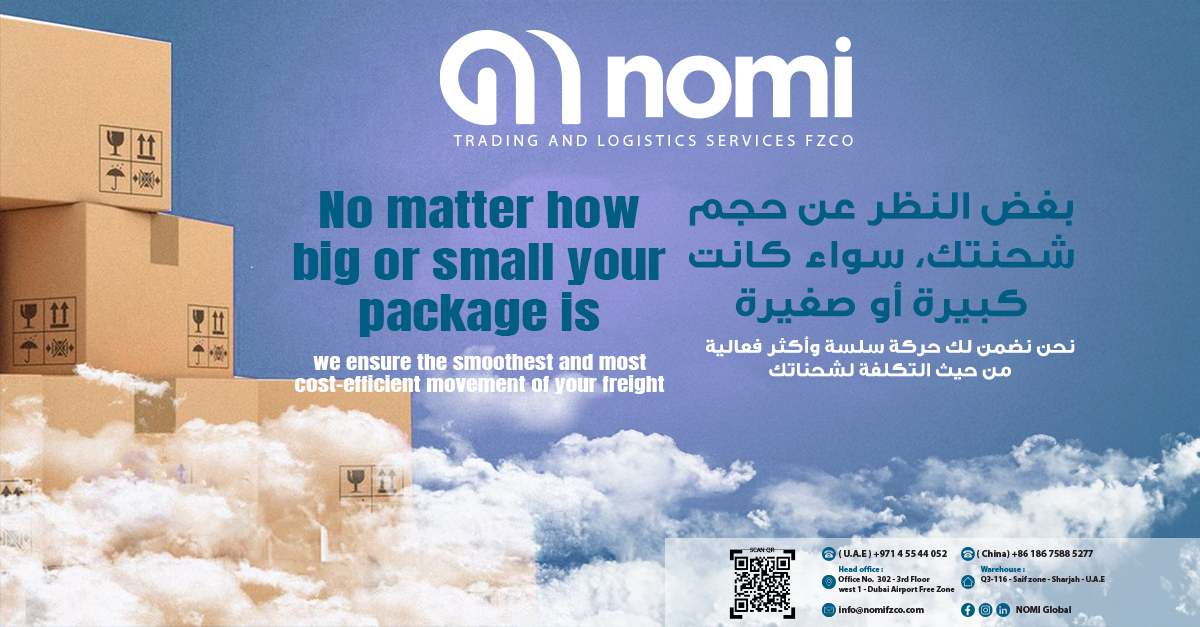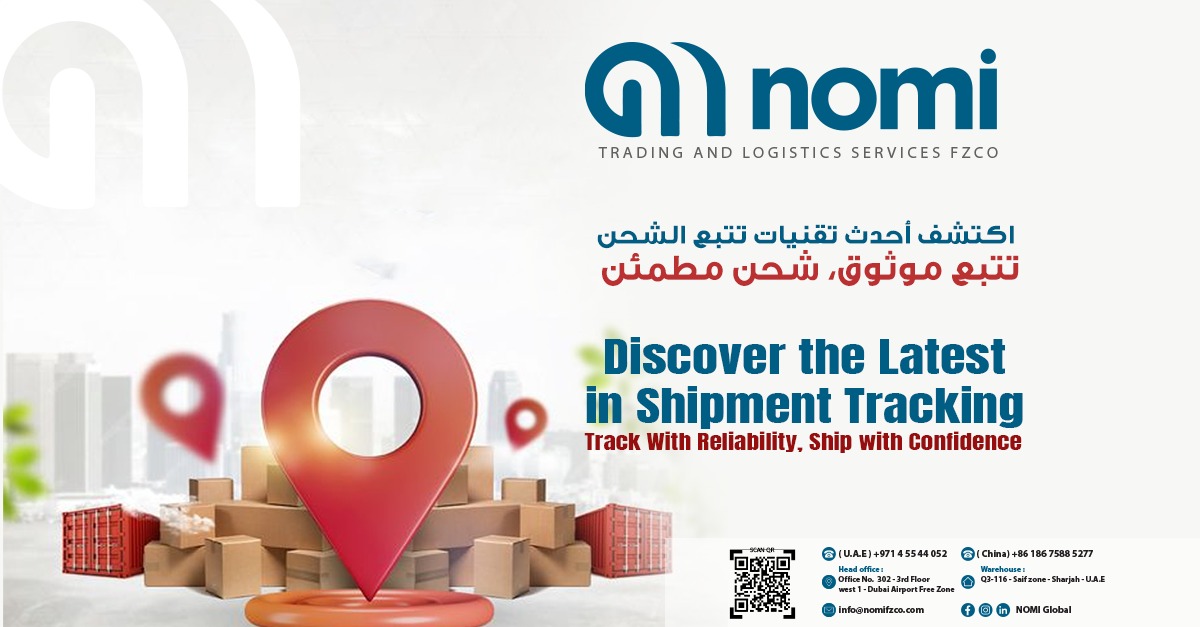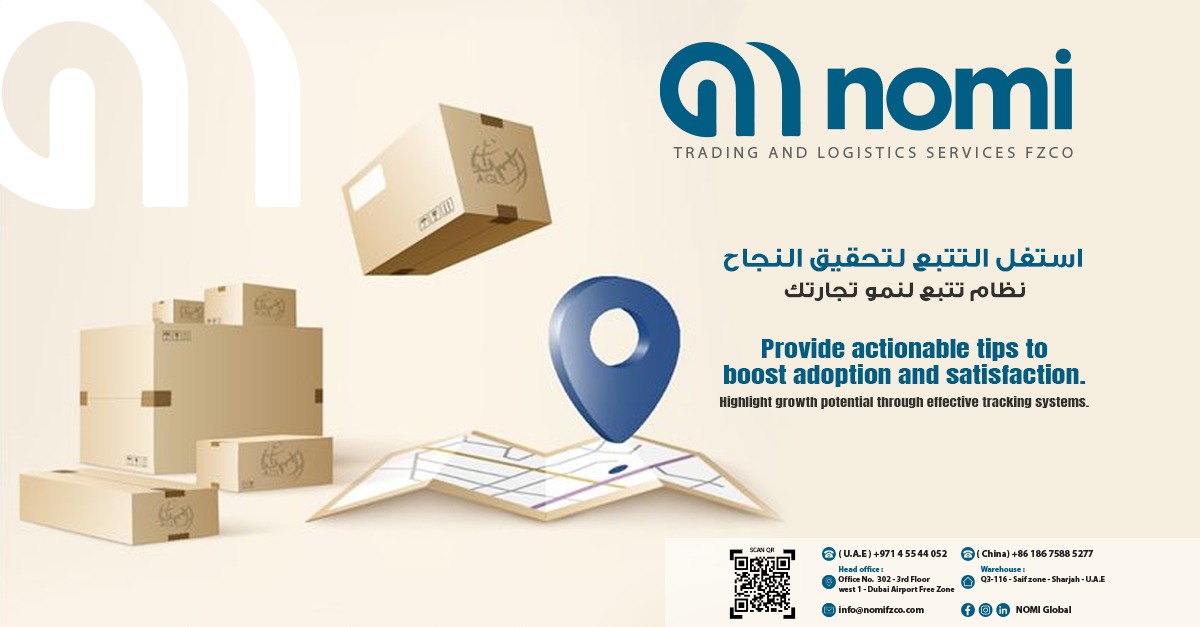
In a highly competitive business world, customer adoption and satisfaction are essential for success. But how can companies ensure they’re meeting customer needs? The answer lies in robust tracking systems that deliver insights into customer behaviors, preferences, and satisfaction levels. This article explores how tracking not only enhances customer engagement but also elevates satisfaction levels, driving growth and a lasting competitive edge.
Why Customer Adoption Matters
When customers quickly adopt a product or service, it’s a strong indicator that the business’s efforts are aligned with user needs. Adoption rates help measure the effectiveness of product features, onboarding processes, and engagement strategies. Successful tracking can reveal patterns in customer behavior that indicate adoption levels, helping companies adjust and refine their approach based on solid data.
How Tracking Boosts Adoption:
Personalized Onboarding: Tailored onboarding experiences, based on tracking data, provide each customer with the necessary guidance and resources, encouraging smoother adoption.
Customer Journey Mapping: Tracking tools allow businesses to visualize the customer journey, identifying friction points and improving the user experience for better adoption.
Satisfaction as a Key Indicator of Customer Loyalty
High satisfaction levels among customers often result in better retention and increased referrals. Satisfaction metrics, such as Net Promoter Score (NPS) and Customer Satisfaction (CSAT) scores, enable businesses to gauge how well they’re meeting or exceeding customer expectations. Tracking provides a clear picture of where customer expectations are met and where adjustments are needed to boost satisfaction.
Key Factors for Customer Satisfaction Tracking:
Prompt Issue Resolution: Tracking helps monitor customer service interactions, enabling teams to resolve issues efficiently and reduce friction.
Proactive Engagement: Data insights from tracking tools can be used to send timely updates, offers, or information, enhancing the user experience and building trust.
The Role of Tracking in Customer-Centric Decision Making
Tracking provides a data-driven approach to understanding customer needs and pain points. With tracking tools, companies can make proactive changes that not only improve the customer experience but also align with the organization’s strategic goals. This approach ensures resources are allocated to areas with the highest impact, maximizing both adoption and satisfaction.
Key Areas for Decision-Making with Tracking:
Feature Development: By analyzing feature usage data, businesses can identify which features add value and which need improvement.
Product Positioning: Tracking enables a clearer understanding of the target audience, allowing for more effective positioning and marketing strategies.
Steps to Implement Effective Tracking for Maximum Success
Implementing tracking processes requires careful planning and clear objectives. Here are the essential steps:
Define Clear Objectives: Set tracking goals that align with overall business objectives, such as increasing retention or improving onboarding experiences.
Choose the Right Tools: Select tracking tools that best fit your data needs. Options range from basic analytics platforms to sophisticated customer experience management systems.
Set Key Performance Indicators (KPIs): Establish KPIs related to customer adoption and satisfaction, and continuously monitor these indicators to track progress.
Implement Feedback Loops: Feedback loops allow companies to gather and act on customer feedback. By actively listening to customers, businesses can make timely adjustments to enhance the user experience.
Continuously Improve: Tracking is an ongoing process. Regularly evaluate tracking practices and adapt as necessary to maintain high adoption rates and customer satisfaction.
Real-World Case Studies of Tracking Success
Case Study: A SaaS Platform Increases Adoption by 35%
A Software-as-a-Service (SaaS) company utilized customer journey tracking to enhance its onboarding process. By analyzing where users tended to drop off, the company identified complex steps in the sign-up process. Simplifying these steps and adding personalized tutorials led to a 35% increase in user adoption over six months.
Case Study: E-Commerce Business Boosts Customer Satisfaction
An e-commerce company implemented tracking to monitor customer interactions with the product support team. Through tracking data, they identified a common question related to product installation. By adding a step-by-step guide to their website and support emails, they reduced related support calls by 40%, greatly increasing customer satisfaction.
Overcoming Challenges in Tracking Implementation
While tracking offers numerous benefits, there are challenges to keep in mind:
Data Privacy Compliance: Ensure compliance with data privacy regulations such as GDPR. Only collect necessary data and ensure customer consent.
Avoiding Data Overload: Focus on tracking relevant data points that directly impact customer satisfaction and adoption to avoid overwhelming insights.
Acting on Insights: Data is valuable only if it’s actionable. Make sure insights lead to tangible actions and improvements in customer experience.
Conclusion: A Proactive Approach to Customer Success
Effective tracking enables companies to understand and respond to customer needs, driving both adoption and satisfaction. With clear goals, suitable tools, and a commitment to act on insights, tracking can transform customer experiences and foster long-term loyalty. Businesses that leverage tracking as a core component of their strategy are better positioned to meet customer expectations, reduce churn, and achieve sustained success.



في عالم الأعمال المتنافس اليوم، يمثل تبني العملاء ورضاهم عنصرين أساسيين لتحقيق النجاح. ولكن كيف يمكن للشركات التأكد من أنها تلبي احتياجات عملائها؟ الجواب يكمن في أنظمة التتبع الفعّالة التي توفر رؤى عميقة حول سلوكيات وتفضيلات العملاء ومستويات رضاهم. يستعرض هذا المقال كيف يعزز التتبع من تفاعل العملاء ويزيد من رضاهم، مما يؤدي إلى نمو مستدام وميزة تنافسية طويلة الأمد.
أهمية تبني العملاء
عندما يتبنى العملاء منتجًا أو خدمة بسرعة، يكون ذلك مؤشرًا قويًا على توافق جهود الشركة مع احتياجات المستخدمين. تساعد معدلات التبني في قياس فعالية ميزات المنتج وعمليات التعريف الأولى واستراتيجيات التفاعل. يكشف التتبع عن أنماط سلوك العملاء التي تشير إلى مستويات التبني، مما يساعد الشركات على ضبط نهجها وتحسينه استنادًا إلى بيانات قوية.
كيف يعزز التتبع من التبني:
تعريف مخصص للمستخدمين الجدد: يمكن للتجارب التعريفية المخصصة استنادًا إلى بيانات التتبع أن تقدم لكل عميل التوجيه والموارد اللازمة، مما يشجع على تبني أسرع.
رسم خريطة رحلة العميل: تسمح أدوات التتبع للشركات برؤية رحلة العميل كاملة، مما يساعد في تحديد نقاط الاحتكاك وتحسين تجربة المستخدم لتعزيز التبني.
رضا العملاء كمؤشر رئيسي على الولاء
غالبًا ما تؤدي مستويات الرضا العالية بين العملاء إلى تحسين معدلات الاحتفاظ وزيادة التوصيات. تُمكن مقاييس الرضا مثل صافي نقاط الترويج(NPS) ودرجات رضا العملاء (CSAT) الشركات من تقييم مدى تلبيتها لتوقعات العملاء أو تفوقها عليها. يوفر التتبع صورة واضحة عن المواضع التي تتطلب تحسينات لرفع مستوى الرضا.
العوامل الأساسية لتتبع رضا العملاء:
حل المشكلات بسرعة: يساعد التتبع على مراقبة تفاعلات خدمة العملاء، مما يمكّن الفرق من حل المشكلات بسرعة وتقليل الاحتكاك.
التفاعل الاستباقي: يمكن استخدام رؤى البيانات من أدوات التتبع لإرسال تحديثات أو عروض أو معلومات في الوقت المناسب، مما يعزز من تجربة المستخدم ويبني الثقة.
دور التتبع في اتخاذ القرارات المحورية بناءً على العملاء
يوفر التتبع نهجًا مدعومًا بالبيانات لفهم احتياجات العملاء ونقاط الألم التي يواجهونها. بفضل أدوات التتبع، يمكن للشركات إجراء تغييرات استباقية تحسن من تجربة العملاء وتتماشى مع الأهداف الاستراتيجية للمؤسسة. هذا النهج يضمن تخصيص الموارد للأنشطة التي تحقق أعلى تأثير، مما يزيد من معدلات التبني ورضا العملاء.
المجالات الرئيسية لاتخاذ القرار باستخدام التتبع:
تطوير الميزات: من خلال تحليل بيانات استخدام الميزات، يمكن للشركات تحديد الميزات التي تضيف قيمة وتلك التي تحتاج إلى تحسين.
تموضع المنتج: يسهم التتبع في فهم أعمق للجمهور المستهدف، مما يسمح بتحسين استراتيجيات التموضع والتسويق.
خطوات لتطبيق التتبع الفعّال لتحقيق أقصى نجاح
يتطلب تنفيذ عمليات التتبع تخطيطًا دقيقًا وأهدافًا واضحة. فيما يلي الخطوات الأساسية:
تحديد أهداف واضحة: حدد أهداف التتبع بحيث تتماشى مع أهداف الشركة العامة، مثل زيادة معدلات الاحتفاظ أو تحسين تجارب التعريف.
اختيار الأدوات المناسبة: اختر أدوات التتبع التي تناسب احتياجات بياناتك. تتراوح الخيارات من منصات التحليل الأساسية إلى أنظمة إدارة تجربة العملاء المتقدمة.
تحديد مؤشرات الأداء الرئيسية (KPIs): ضع مؤشرات الأداء الرئيسية المرتبطة بتبني العملاء ورضاهم، وقم بمراقبتها باستمرار لمتابعة التقدم.
تنفيذ دورات التغذية الراجعة: تسمح دورات التغذية الراجعة للشركات بجمع آراء العملاء واتخاذ إجراءات بناءً على هذه الآراء.
التطوير المستمر: يعتبر التتبع عملية مستمرة. قيم ممارسات التتبع بانتظام وتكيف معها حسب الضرورة للحفاظ على معدلات تبني مرتفعة ورضا العملاء.
دراسات حالة ناجحة للتتبع في الواقع العملي
دراسة حالة: زيادة تبني منصة SaaS بنسبة 35%
استخدمت شركة تقدم برمجيات كخدمة (SaaS) تتبع رحلة العميل لتحسين عملية التعريف بالمستخدمين. من خلال تحليل نقاط التعثر، قامت الشركة بتبسيط الخطوات المعقدة في عملية التسجيل، مما أدى إلى زيادة التبني بنسبة 35% خلال ستة أشهر.
دراسة حالة: زيادة رضا العملاء في مجال التجارة الإلكترونية
قامت شركة تجارة إلكترونية بتطبيق التتبع لمراقبة تفاعلات العملاء مع فريق الدعم. من خلال بيانات التتبع، اكتشفت الشركة أسئلة شائعة حول تركيب المنتجات، فأضافت دليلًا خطوة بخطوة على موقعها الإلكتروني ورسائل الدعم، مما قلل من المكالمات المتعلقة بالدعم بنسبة 40% وزاد من رضا العملاء بشكل ملحوظ.
التغلب على تحديات تنفيذ التتبع
بالرغم من الفوائد العديدة للتتبع، إلا أن هناك تحديات يجب مراعاتها:
الامتثال لخصوصية البيانات: تأكد من الامتثال للوائح خصوصية البيانات مثل GDPR، وقم بجمع البيانات الضرورية فقط مع ضمان موافقة العملاء.
تجنب التحميل الزائد للبيانات: ركز على تتبع النقاط الأساسية التي تؤثر مباشرة على رضا العملاء والتبني لتجنب التحميل الزائد بالبيانات.
العمل بناءً على البيانات: تكون البيانات ذات قيمة فقط إذا كانت قابلة للتنفيذ. تأكد من أن التحليلات تؤدي إلى تحسينات فعلية في تجربة العملاء.
نهج استباقي لتحقيق النجاح
يساعد التتبع الشركات على فهم احتياجات العملاء والاستجابة لها، مما يعزز من معدلات التبني ورضا العملاء. من خلال وضع أهداف واضحة واختيار الأدوات المناسبة والالتزام باتخاذ إجراءات بناءً على الرؤى، يمكن أن يحوّل التتبع تجربة العملاء ويعزز من ولائهم على المدى الطويل. الشركات التي تعتمد على التتبع كجزء أساسي من استراتيجيتها تكون أفضل استعدادًا لتلبية توقعات العملاء وتقليل معدل الاستنزاف وتحقيق النجاح المستدام.
Why Adopt These New Features?
With these upgrades, Nomi Global’s tracking system not only enhances visibility but also empowers you to make informed decisions faster. These tools help you keep customers satisfied, anticipate potential delays, and maintain control over your logistics operations.
Explore these features today and experience how they can transform your logistics process with Nomi Global FZCO!
Partner with Nomi Global Today
Shipping shouldn’t be a barrier to growth. At Nomi Global, we’re committed to providing SMEs with the tools and support they need to succeed in a fast-paced global market.
Contact us today to learn how we can help you optimize your shipping and logistics operations!
Website: https://nomifzco.com/
Tracking System: https://nomifzco.com/track-form/
Follow Me for More Insights!
Stay connected with us to learn more about logistics and discover how the cargo and delivery industry will be digitally transformed. Follow Nomi Global for updates, insights, and industry trends!

